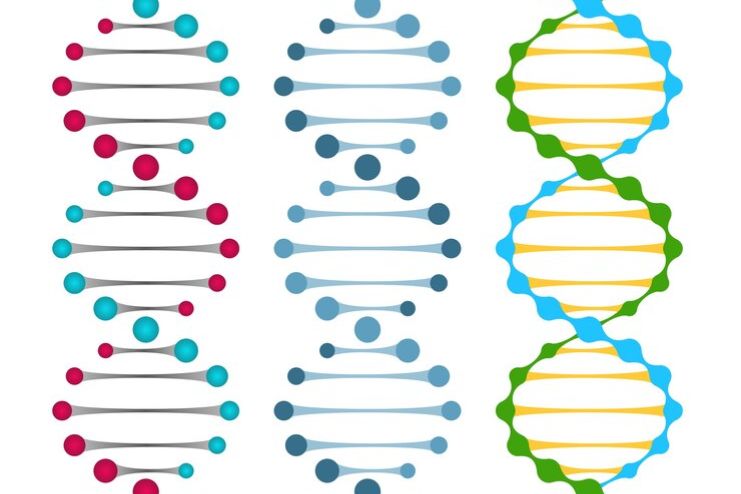AI Contribution
At HealthSpectra, we may use AI to refine grammar and structure, but every piece is shaped, checked, and approved by real people, our expert writers and editors, to ensure clarity, credibility, and care. Learn more..Affiliate Disclaimer
Some links in this article are affiliate links. We may earn a small commission if you make a purchase through these links, at no extra cost to you. We only recommend products we find useful to our readersDiabetes is a complex metabolic disorder and is well known to be influenced by genetic as well as environmental factors. The importance of the role of genetics in diabetes lies in genetic predisposition. Several genes and genetic variants contribute to diabetes susceptibility.
It covers the extensive interaction of genetics and diabetes susceptibility, including major studies, and genetics factors as well as their implications to prevention and treatment.
Heredity and Family History

Genetics is one of the significant factors that determine risk in diabetes, especially type 2 diabetes (T2D). Having a history of diabetes in a near relative increases your chances of developing diabetes. The majority of studies indicated that genetics accounts for approximately 40% to 80% of the risk factor in T2D (R).
Genetic factors are much more important in T1D. Some genes, especially those limited to the human leukocyte antigen (HLA) region, predispose to T1D.
Many genetic variations associated with T2D have been identified in recent studies (R). Some of these have been shown to increase susceptibility to T2D, for example, the genes TCF7L2 and HNF4A. These findings remind us how important family history is in defining one’s own risk for diabetes.
Therefore, if there is a family history of diabetes, you should know that you are vulnerable. With check-ups as well as healthy lifestyle choices, you will be able to cut down the chances of diabetes.
Information on the hereditary elements helps in earlier detection as well as better prevention measures for those under risk.
Genetic Variants and Associations

These have differences in the DNA sequence that can affect our bodies and how we may react to certain things, like diabetes. Some of the most important types of variants that are known to increase the predisposition of type 2 diabetes were identified through research.
Early studies targeted specific genes thought to impact diabetes risk. For instance, candidate gene studies indicated that a group of genes, ABCC8 and KCNJ11, are relevant to insulin secretion. Mutations in these genes reduce the capacity of the pancreas to secrete insulin, which is crucial in managing blood sugar levels.
Genome-wide association studies have been central to new genetic markers. Genome-wide association studies have scanned the entire human genome for variations associated with T2D.
As the research progressed, more detailed and extensive studies were conducted to further confirm many of these associations with T2D.
A study that focused on several genetic variants in the UK found associations with T2D and genes that are part of the insulin signaling pathway including INSR and PIK3R1. The susceptibility to diabetes also seems to depend on some other genomic loci.
New genetic markers have been central to genome-wide association studies. The whole human genome has been scanned for variations associated with T2D in genome-wide association studies.
Among the most highlighted genes that came out is TCF7L2, which has been repeatedly diagnosed with diabetes. This gene functions in the regulation of insulin signaling and glucose metabolism.
Despite such progress, so much is yet to be learned regarding the complexities of the genetics that lead to diabetes. Hence, studies on these genetic variants are viewed to explore the risk of diabetes more clearly, and perhaps future prevention and treatment strategies may be possible.
Genetic Linkage Studies

Genetic linkage studies try to investigate areas of chromosomes that have been mapped and are suspected to have a high correlation with an increased risk for type 2 diabetes (T2D). The idea is to identify genetic markers that tend to be inherited together due to their close location on the same chromosome.
In this manner, looking at families affected by diabetes may identify genes that are associated with the disease.
Certain chromosomes have been pinpointed in genome-wide linkage scans to be associated with T2D. For example, for diabetes susceptibility specifically, chromosomes 4q, 12q, and 22q have been linked to diabetes in African Americans.
In other populations, that is, Mexican Americans and Chinese, different chromosomes such as 2p and 13p have been associated with similar kinds of associations.
It’s possible to identify some of the genes related to diabetes through genetic linkage studies. However, it is considered generally less successful in the field of the study of genetics than other forms of research.
Most researchers have pointed out the fact that it very often identifies only a few significant genes. As recently as 2013, a review established that the two most common genes attributed to T2D were CAPN10 and TCF7L2.
However, genetic linkage studies are an integral step in understanding the genetic basis of diabetes.
Epigenetics and Diabetes

Epigenetics is defined as the alteration in gene expression that is not determined by DNA sequence. These alterations can arise due to environmental causes, lifestyle, and food intake. Epigenetic modifications might have an important role in diabetes for the insulin gene expression involved in glucose metabolism.
Environmental exposures such as diet and exposure to harmful chemicals induce epigenetic changes that increase the susceptibility to the development of type 2 diabetes.
In this regard, it has been shown that a diet rich in processed foods and sugars predisposes to changes in DNA methylation. This is the most common type of epigenetic modification, which affects insulin sensitivity and pancreatic beta-cell function.
In addition, epigenetic factors can interact with genetic predispositions to increase the risk of diabetes. Genetic variants that result in an increased susceptibility level exist in those with a family history of diabetes. Such people could have particular epigenetic changes that raise their susceptibility level to diabetes.
Thus, it indicates that though a person may have a genetic predisposition for the disease, his risk of developing diabetes can either be increased or decreased by his lifestyle and environment.
With this understanding of epigenetics, comes targeted interventions in prevention and treatments as well as key epigenetic changes that were found to be linked to diabetes.
This aids scientists in developing interventions that could be reversed or lessened; thus reducing the chances of developing the disease in people at risk.
Gene-Environment Interactions

Gene-environment interaction is the process of relationship between genetic components and environmental factors that determine the risk of acquiring T2D. Although genetics contribute a lot to the susceptibility of an individual to diabetes, environmental influences such as diet, lifestyle, and exposure to pollutant gases equally cause the risk to increase.
Certain genetic variants have been identified to be more prone to susceptibility to causing diabetes. On the other hand, such genetic effects may be conditioned by environmental conditions.
For example, a person who may have a huge risk of acquiring the condition via his genetics will not contract the condition if he or she leads a very healthy lifestyle by eating well and exercising regularly.
On the contrary, an individual with the same genotype can increase his or her chances of developing diabetes if he or she leads a very unhealthy lifestyle, like a high-calorie diet and a sedentary lifestyle.
Research has identified the impact of socioeconomic status on the risk of developing diabetes. Generally, low socioeconomic status in most developing countries has been associated with a greater risk of developing diabetes, mainly because of a shortage of healthy food or good healthcare.
However, the pattern is reversed in developed countries, where higher socioeconomic status will, at times, be linked to an increased risk for diabetes, probably due to lifestyle factors.
No doubt, there is a direct link between genetic factors and human exposure to environmental toxins, including Persistent Organic Pollutants (POPs). With the development of diabetes, there could be specific chemical exposures that disturb hormonal balance and lead to insulin resistance in those whose genes predispose them to diabetes.
Conclusion
Genetics is one of the causes of diabetes, especially T2D. Family history is also a contributing factor to whether one has been diagnosed with the disease or not. Sometimes, certain genetic variants increase or decrease the risk of that individual developing diabetes.
This helps them understand genetic factors, which would also enable them to know and take early actions concerning their risk. If you have a family history of diabetes, then you can schedule regular check-ups and make healthy lifestyle choices to lower your chances of getting the disease.
It is therefore evident that genetics work together with environmental factors and lifestyle choices in the case of diabetes risk.
Looking forward, research in genetics may come up with entirely new ways in prevention and treatment. Some promising possibilities include epigenetics, the gut microbiome, and the emerging field of personalized medicine.
Once we understand the impact of genetics on diabetes, we can start taking preventive measures and designing better treatments for those at risk and improve overall health.
References
- https://www.ncbi.nlm.nih.gov/pmc/articles/PMC9639302/
- https://www.ncbi.nlm.nih.gov/pmc/articles/PMC10294065/
- https://diabetes.org/about-diabetes/genetics-diabetes
- https://www.ncbi.nlm.nih.gov/books/NBK1667/
- https://www.healthline.com/health/type-2-diabetes/genetics
- https://www.medicalnewstoday.com/articles/317468
- https://www.webmd.com/diabetes/diabetes-type-1-genetics
- https://www.mdpi.com/2073-4425/6/1/87
- https://www.sciencedirect.com/science/article/abs/pii/S0026049519301490
- https://www.frontiersin.org/journals/public-health/articles/10.3389/fpubh.2019.00349/full
In this Article





















